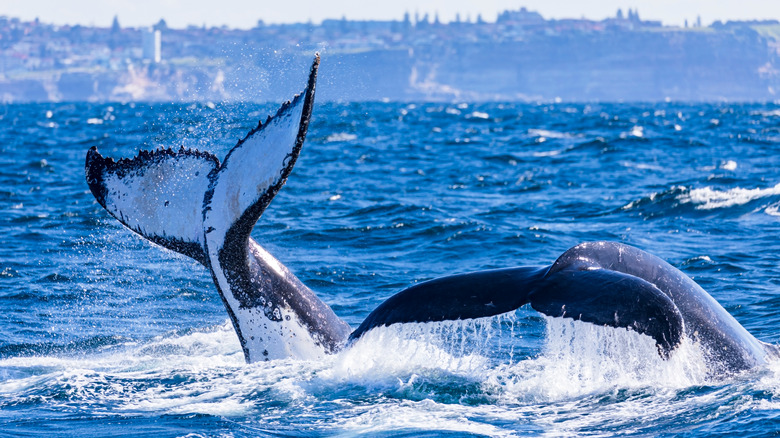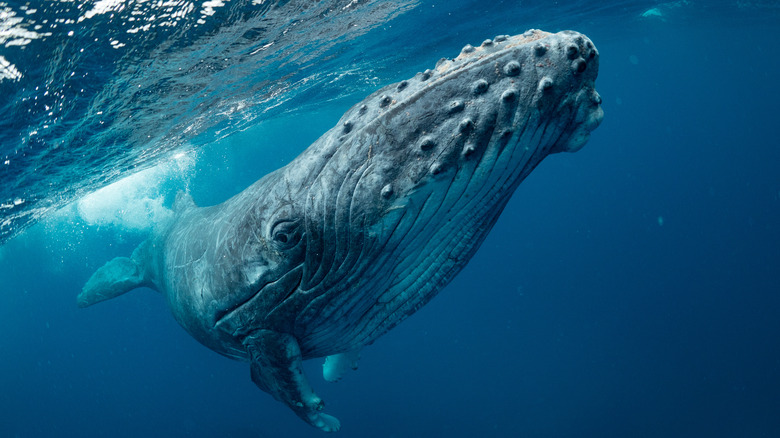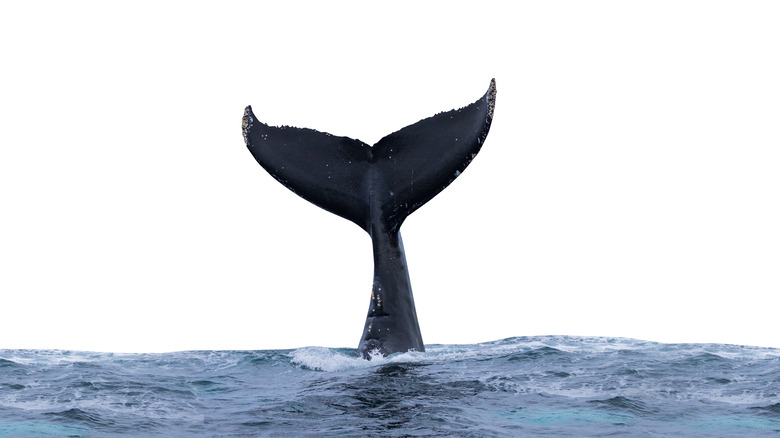The Science Behind How Whales Can Stay Underwater For So Long
How long can you hold your breath? A minute? More? Maybe you've been training, doing your O2 tables, and you can reach five minutes. The Guinness World Record in 2020 went to a freediver in Croatia, who held his breath for almost 25 minutes, which shouldn't be possible. (He was 56 at the time. Remember that next time someone tells you they're "too old" for sport.)
But even that's nothing compared to what a whale can do. According to the British Natural History Museum, a sperm whale will generally hunt underwater for about 90 minutes before it comes up for a breath, no training required. One sperm whale made just under two hours on a single dive. But the longest recorded cetacean dive was a Cuvier's beaked whale, who went 222 minutes — over 3.5 hours, longer than the 2001 film "The Lord of the Rings: Fellowship of the Ring" (via IMDb) — on a single breath.
Take a deep breath
That 222-minute record is likely an outlier, of course, like the freediver's 25 minutes. Smithsonian notes that many whales dive for much shorter periods, often less than 15 minutes. Orcas, or killer whales, can rarely make five minutes. They surface briefly, just enough to get their blowhole above the surface: whales cannot breathe through their mouths, an evolutionary adaption that keeps them from drowning. But even five minutes per breath, all day, is impressive by any standard. How do they do it?
First, consider their lungs: they're huge. A blue whale's lung capacity is about 13,000 gallons, which is bigger than some New York apartments. Whale lungs are more efficient, too. As Smithsonian explains, a human only absorbs and assimilates 20% or less of the oxygen in each breath. A whale assimilates 80% of it. Like all mammals, including us, whales exhibit the "mammalian dive reflex" as well. On a dive, their heart rate slows, unnecessary functions like digestion pause, and the organs constrict, continuing blood supply to the brain in the absence of inhalation (via Dartmouth University).
The secret's in the blood
But the real secret to whale diving happens in their bloodstream. Their myoglobin molecules are "sticky." Mental Floss explains that myoglobin is the molecule in blood that brings oxygen to muscle. Myoglobin is red, which is why our blood is red; but whales have so much of it that their blood and organs are almost black.
It's not just that whales have an unusually high myoglobin count, although that certainly helps. Myoglobin proteins tend to stick together when they collide. A lot of myoglobin in the bloodstream generally leads to big snowballs of myoglobin molecules, too big to deliver oxygen to muscle cells. Marine mammals like whales, however, have positively-charged myoglobin molecules, which don't stick together. This leaves the blood fluid and able to oxygenate muscles, even during the stress of a dive. Seals and sea otters share this trait, which may become useful to human medicine someday, specifically for blood transfusions. Who knows? Maybe a future blood transfusion recipient will beat the 25-minute breath record, helped by our cousin, the whale.


